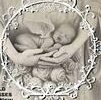Donate Wedding Dresses
If you’re getting married or have recently gotten married, you might be wondering what to do with your wedding dress after the big day. Many brides choose to save it as a keepsake, while others participate in the popular “destroy the dress” tradition of wearing it out for fun and having photos taken. However, if you don’t want to keep your dress or you don’t have a daughter who can wear it later, there are plenty of other options. Several charities that accept wedding dress donations, particularly those with a specific focus like breast cancer, will take used dresses. Some of them resell them, while others use the proceeds to support various causes. If you’re thinking about donating your wedding dress, you should contact the charity of your choice for their specific guidelines and instructions. For example, Brides Against Breast Cancer sells donated wedding gowns to raise funds for early detection programs that help prevent the disease. The charity also supports the Women’s Cancer Survivorship Initiative and other initiatives to improve women’s health. Another charity that accepts wedding dresses is Adorned in Grace, a faith-based organization that works to help sex trafficking victims and raise awareness in local communities. Its boutiques sell new and gently used bridal dresses and formalwear with sales proceeds funding professional counseling for trafficking survivors, sex trafficking prevention publications, and other initiatives. St Ann’s, a global charity organization with a mission to make the world a fairer place, operates several retail stores that raise funds for a number of women-focused charities including domestic violence and sexual assault services, housing for single mothers, and more. The organization accepts dresses and other accessories in good condition as well as maternity and flower girl gowns. One of the biggest organizations to accept dresses and other formalwear for donation is Oxfam, which has over 700 retail locations across the country. Its Oxfam Unwrapped program helps provide essential items such as clean drinking water, food, and medicine to people living in poverty around the world. Its Bridal department accepts new and pre-owned wedding dresses, as well as a variety of other bridal items including jewelry, veils, shoes, and more. Before donating your dress, make sure it’s in good condition and dry cleaned. If it has been in storage for a while, it may develop mold and other issues. Also, be sure to label the box with helpful information about the dress to save the charity volunteers’ time. This can include the size of the dress, the brand or designer, and the year it was purchased. The information will help potential brides who are shopping for a gown find the right dress to match their needs. In addition, a label can prevent the dress from being confused with other donations. It can also prevent a charity volunteer from accidentally throwing away your dress due to a misunderstanding about its status. Lastly, a label can also protect your dress from possible theft during transit.
